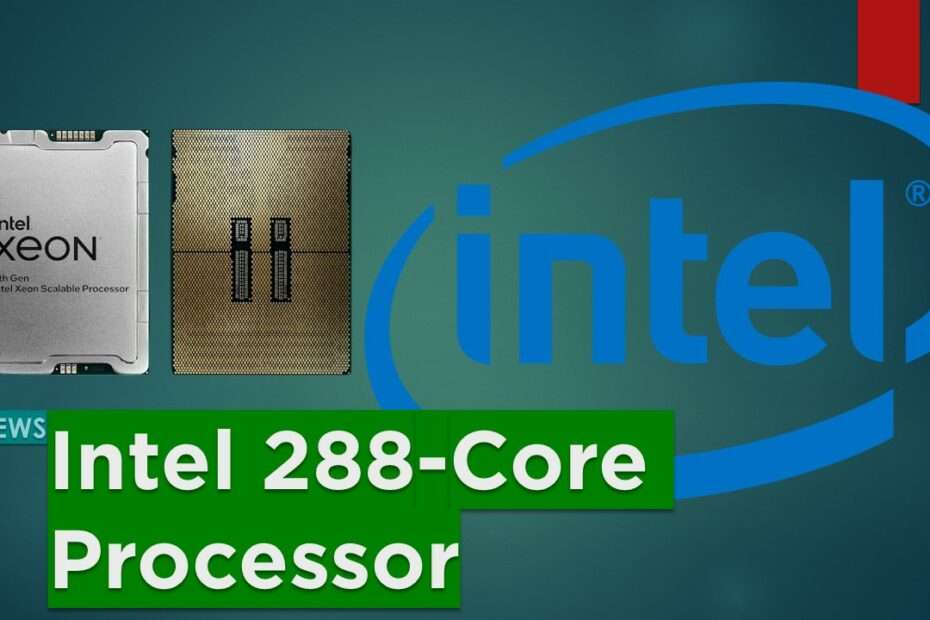Intel made significant revelations about its forthcoming consumer products while simultaneously introducing a formidable 288-core CPU in its ‘Sierra Forest‘ series, specifically designed for high-density servers. This groundbreaking announcement underscores Intel’s commitment to pushing the boundaries of computing power. Additionally, Intel confirmed that Sierra Forest, Granite Rapids, and Clearwater Forest, part of its high-performance server lineup, will be seamlessly compatible with the upcoming Birch Stream platform, a significant development that will incorporate the new LGA 4710 and LGA 7529 sockets. This strategic alignment promises to empower data centers and server infrastructure with enhanced capabilities, ushering in a new era of high-performance computing.
This dual revelation at the Innovation 2023 event signifies Intel’s ambition to cater to both the consumer and enterprise markets, reinforcing its position as a leader in the technology industry. The 288-core CPU, as part of the Sierra Forest lineup, promises to deliver unparalleled processing capabilities for data-intensive tasks, while the compatibility with the Birch Stream platform opens the door for advanced server configurations and scalability, setting the stage for more efficient and powerful computing solutions. This move reflects Intel’s dedication to innovation and its ongoing efforts to address the evolving needs of diverse sectors within the technology landscape, promising exciting developments on the horizon for both consumers and enterprise customers.
Intel has unveiled a formidable 288-core CPU, featuring a dual-chiplet configuration with 144 cores on each die, resulting in an impressive 288 cores and 288 threads. This announcement positions Intel to compete directly with AMD’s EPYC Bergamo CPUs, known for offering up to 128 Zen 4C cores, and Ampere’s 192-core AmpereOne processors, both of which made their debut earlier this year. Notably, there is speculation within the industry, that Intel may even explore the possibility of launching a tri-chiplet SKU with a staggering 432 cores, although the feasibility of such a technological advancement remains uncertain and will undoubtedly draw significant attention.
Intel’s latest offering in the form of the 288-core CPU underscores the fierce competition in the high-performance computing market, with companies constantly striving to push the boundaries of core count and processing power. As the technology landscape continues to evolve, this development signifies Intel’s commitment to staying at the forefront of innovation, promising exciting prospects for users in need of unparalleled processing capabilities for a wide range of demanding applications.
Intel has set a significant date in the calendar, announcing the launch of its 5th-gen Xeon family, codenamed ‘Emerald Rapids‘, scheduled for December 14. This forthcoming release comes with notable advancements and compatibility with the existing Eagle Stream platform. Intel has indicated that these new processors will introduce enhancements such as faster memory, promising substantial performance improvements when compared to their 4th-gen predecessors, all while maintaining the same power consumption levels. This development signifies Intel’s dedication to improving server and data center capabilities, offering a compelling option for those seeking higher computing performance and efficiency.
The announcement of the ‘Emerald Rapids‘ launch showcases Intel’s commitment to evolving its server processor lineup, a move aimed at staying competitive in the rapidly evolving landscape of data center and enterprise computing. With the promise of enhanced performance and power efficiency, these 5th-gen Xeon chips hold the potential to benefit a wide range of applications and industries, from cloud computing to scientific research and beyond.
Intel’s latest announcement underscores its heightened commitment to the field of artificial intelligence (AI). The company revealed plans to construct a dedicated supercomputer tailored for AI applications, this powerful machine will be exclusively powered by Intel’s Xeon processors, complemented by a staggering 4,000 Gaudi2 AI hardware accelerators. Stability AI, renowned for its generative AI model Stable Diffusion, is set to be the primary beneficiary of this advanced computing system. This strategic collaboration between Intel and Stability AI signifies the growing importance of AI-driven technologies and the demand for high-performance computing solutions that can unlock new frontiers in AI research and development.
Intel’s emphasis on AI applications through this endeavor highlights the significance of AI in contemporary technology landscapes. By combining the computational prowess of Xeon processors with the acceleration capabilities of Gaudi2 AI hardware, this supercomputer has the potential to drive innovation across various AI-driven domains, including visual art and beyond. As Intel continues to invest in AI-focused solutions, this partnership with Stability AI is expected to contribute to the development of cutting-edge AI models and applications, pushing the boundaries of what AI can achieve.
At the recent event, Intel not only delved into its enterprise-oriented developments but also provided insights into its consumer product roadmap. Intel shared the eagerly anticipated launch date for its Meteor Lake CPU lineup, signaling the company’s commitment to enhancing its consumer-grade processors. Furthermore, Intel offered a glimpse into its future processor generations, including Arrow Lake, Lunar Lake, and Panther Lake.
The announcement of Intel’s Meteor Lake CPU launch date and the roadmap for upcoming processor generations exemplifies the company’s multifaceted approach to technology development, addressing both enterprise and consumer markets. These advancements not only showcase Intel’s vision for the future but also signal its intention to remain competitive in the ever-evolving landscape of consumer computing, setting the stage for exciting developments and choices for consumers in the near future.
The eagerly awaited Meteor Lake processors are on the horizon, with the initial batch of ‘Core Ultra’ chips slated for release on December 14. Intel has been touting Meteor Lake as a monumental architectural shift in its processor design, marking the most substantial change in the company’s four-decade history. The upcoming launch is expected to bring substantial enhancements in both performance and efficiency compared to its predecessors.
Beyond Meteor Lake, Intel’s processor roadmap includes a series of intriguing developments. Arrow Lake is expected to make its debut in the second half of 2024, followed by Lunar Lake, potentially arriving by 2024-2025. Panther Lake is the next milestone, set for release in 2025.
Maybe you liked other articles?

